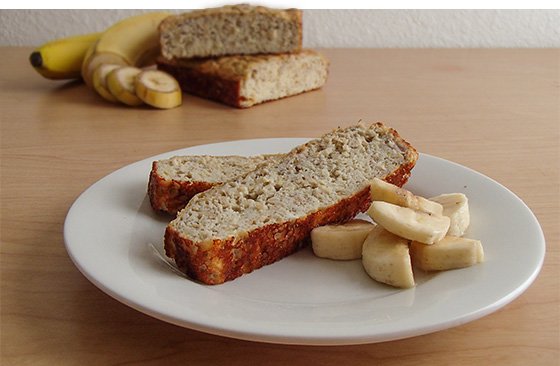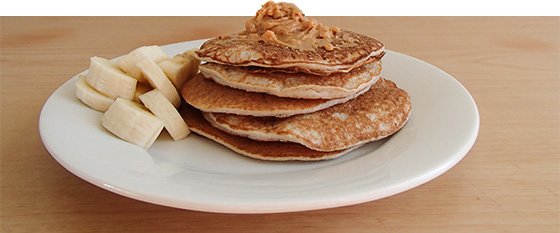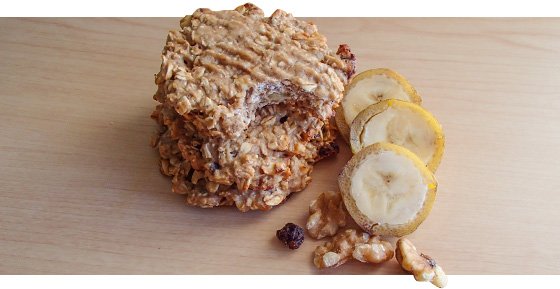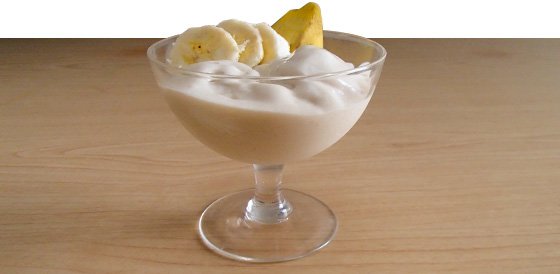G-Fuel tubs $17.99
by TC T-Nation
Here's what you need to know...
• Forskolin's thyroid stimulating strength has been compared to thyrotropin or TSH.
• Forskolin caused male subjects in a 12-week trial to experience a 16.77% increase in total Testosterone.
• Forskolin increases the metabolism, burns fat, breaks down triglycerides, and increases lean body mass.
The boss at my last job used to keep a box of discarded supplements next to his desk. They were things people had sent us to try. Most of the time we'd take a look at the ingredients, roll our eyes, and then shoot them into the box with a fade-away jumper.
But the contents of that box fascinated the head of the advertising department. He must have been was one of those "one man's garbage is another man's treasure" guys at heart, because he'd rifle through the box like an adolescent looking for the one-eyed Teddy Bear he wasn't quite ready to give up.
He liked experimenting with a good number of those throwaway supplements, so much so that we joked about how we'd have to bury his green, glowing liver in a toxic waste repository after he died.
One day, though, he came in holding up his latest and greatest find from the box. It was a relatively small, white, plastic bottle from England. "Hey, what the hell is in this stuff?" he said. "I put on 10 pounds in the last 3 weeks and my strength has gone through the roof!"
This was the first time we'd heard him use those kinds of clichŽs, so one of the other guys in the boss' inner circle felt compelled to try the mysterious supplement, too. A couple of weeks later, he reported more or less the same effects.
That's when we started to look into the supplement. It was called creatine monohydrate. The company I worked for was EAS and they became the first U.S. company to aggressively market creatine, and the number of people willing to fork over 70-plus dollars for a tiny bottle that today would sell for a couple of bucks became the stuff of supplement-company legend.
Creatine is a good part of the reason why nowadays you can't swing a hypertrophied dead cat without hitting the head of an owner of a supplement company. Many of them wanted to recreate that success story, but in a lesson they should have learned from any one of a number of gold rushes in the 19th century, gold ain't that easy to find in them-there hills.
Is There More Gold in the Box?
There's no one alive, I presume, that continually uses every supplement at the same time, let alone every Biotest supplement at the same time, and I'm certainly no exception.
But every so often, I start using a Biotest supplement that I haven't, for whatever reason, used for awhile. In that sense, I'm sort of like that EAS employee who kept digging in that box. Now I know what you're thinking. You're assuming I've found something magical in our supplement line, something like the next creatine.
Well, you'd be mostly right. I have "re-discovered" something really interesting, and now that I'm using it once more and enjoying its effects, I've begun digging into the research again and frankly, I can't figure out why this product didn't cause more of a creatine-like frenzy. By all reason, it should become a staple in everyone's supplement arsenal because it's really, really, cool.
Enter, or should I say, re-enter, forskolin, a supplement that raises thyroid hormone levels and Testosterone levels. The increased levels of those two hormones naturally lead to an increase in fat burning and lean body mass, but forskolin is blessed with other fat burning and muscle building properties, too (explained later on in this article).
And I'm not just offering rat studies as proof, either. There have been a number of research studies conducted with real live, honest-to-goodness fat people. Here's a rapid-fire compendium of results from just a few studies on forskolin:
• Male subjects in a 12-week trial experienced a 16.77 +/-33.77% increase in total Testosterone compared with a 1.08 +/- 18.35% decrease in the placebo group.
• Female subjects in an 8-week study lost a mean of 9.17 pounds weight, while experiencing gains in lean body mass (without weight training).
• The total body weight of a mixed group of men and women in a 12-week study decreased from 74.7 kilograms to 73.5 kilograms while experiencing increases in lean body mass (without weight training).
• The forskolin users in a mixed-sex group of 50 test subjects experienced a 1.78 percent increase in lean body mass (compared with a 0.20 decrease in the placebo group) and a decrease in mean body fat from 35.8 to 34.0 percent (while the placebo group showed an increase from 38.8 to 39.0 percent).
And there are lots of other studies, too, all pretty impressive.
Increased Thyroid Hormone Production and Increased Testosterone Production
Forskolin is a compound derived from the herb, Coleus forskohlii, and it stimulates an enzyme called adenylate cyclase, which increases cellular concentrations of a cellular messenger called cyclic AMP, or cAMP.
Now cAMP is one versatile little bugger in that it interacts with a host of different types of cells. When you raise levels of cAMP, you lower blood pressure, reduce intraocular (eye) pressure, inhibit platelet aggregations (clotting), promote vasodilation (opening up of blood vessels), increase bronchodilation (improved breathing), and, most importantly to us, increase thyroid hormone secretion and speed up lipolysis (fat burning).
Forskolin's thyroid stimulating strength has even been compared to thyrotropin or TSH, which is pretty damn impressive. Not only does this increased thyroid hormone production increase fat loss, but increased levels of cAMP activate something called protein kinase that's been shown to activate hormone-sensitive lipases, which are involved in the breakdown of the building blocks of fatty tissue known as triglycerides.
Furthermore, forskolin has a nifty little trait of improving the fat-burning ability of any other fat burning ingredients you might be taking, which is why it's included in Biotest's popular fat burner.
In addition to breaking down and burning fat, forskolin also increases lean body mass. A higher level of intra-testicular cAMP mimics the action of luteinizing hormone and that translates to an increase in Testosterone production, which as you know is a pretty nice thing to have if you want more muscle.
This increase in Testosterone levels of course contributes to additional lean body mass, but higher levels of cAMP in skeletal muscle also leads to an increase in protein synthesis (which is amplified by the complimentary increase in Testosterone), so you get a nice two-pronged mode of action.
Let me spell it out for you. If you use forskolin to increase levels of cAMP, you end up mimicking the effects of mild calorie restriction and exercise, without actually reducing calories or even exercising, and it does this without making you all jumpy and sweaty-palmed like a lot of compounds that burn fat. Of course, if you add some actual, bonafide exercise to the picture, you naturally get much more impressive results.
So Why Isn't Everybody in the World Using Forskolin?
I suspect that conventional forskolin supplements, i.e., those made with ground up parts of the plant, suffer from the same triad of problems affecting most herbal supplements: standardization, potency, and absorption.
In short, plant products usually face the same challenges as plants themselves. I'm sure you've experienced having a great-tasting tomato, only to follow it up with a tomato that's only fit to be hurled at the neighbor who runs a leaf blower at 7 AM on a Saturday.
If something like taste varies so greatly, you can easily see how levels and potency of different plant chemicals can vary from crop to crop and even plant to plant. One bottle of an herbal supplement might work well, but the next may only be fit to be shot into a refuse box. I think that's the reason forskolin hasn't caught on in the bodybuilding or fat loss world.
What you need to do to get an effective product is to extract and purify the active ingredient, in this case, forskolin 1,9-carbonate (the compound is a "carbonate ester" of forskolin). Then you get a highly pure, single compound that gives powerful, consistent results. Furthermore, by extracting and purifying the active ingredients, you extend forskolin's duration of action from 4 hours to 12 hours.
Lastly, if you've got the technology, you combine forskolin 1,9-carbonate with a self-microemulsifying nutrient delivery system, which improves the bioavailability considerably. That way, you make sure that you actually do get an increase in Testosterone and thyroid hormone, along with the fat burning and muscle building effects you're looking for.
No Fade-Away Jumper for Forskolin, 1-9 Carbonate
Forskolin, 1,9-carbonate shouldn't be compared to creatine. Creatine puts on body weight really, really fast. Granted, most of it is water weight, but no one can deny its effects. Carbolin-19's effects are much more subtle, but over the long run, equally impressive.
References
Godard, et al., "Body composition and hormonal adaptations associated with forskolin consumption in overweight and obese males," Obesity Research, 2005 Aug;13(8):1335-43.
Majeed, et al., Diterpene forskolin: A possible new compound for reduction of body weight by increasing lean body mass," Nutraceuticals, March/April 2002, pp. 6 - 7.
Tsuguyoshi, "Clinical report on root extract of Perilla Plant (coleus forskholii) in reducing body fat," Asanto Institute, Tokyo, Japan, 2001.
Kamath, "Efficacy and Safety of Forslean in Increasing Lean Body Mass," Department of Ayurvedic Medicine, Kasturba Medical College, Manipal, India, 2005.
Luoma, TC, "Luoma's Big Damn Book of Knowledge," Leningrad State Publishing House, Leningrad, 13th edition, 2013.
Source: http://www.t-nation.com/supplements/...with-forskolin











 SHARE
SHARE



